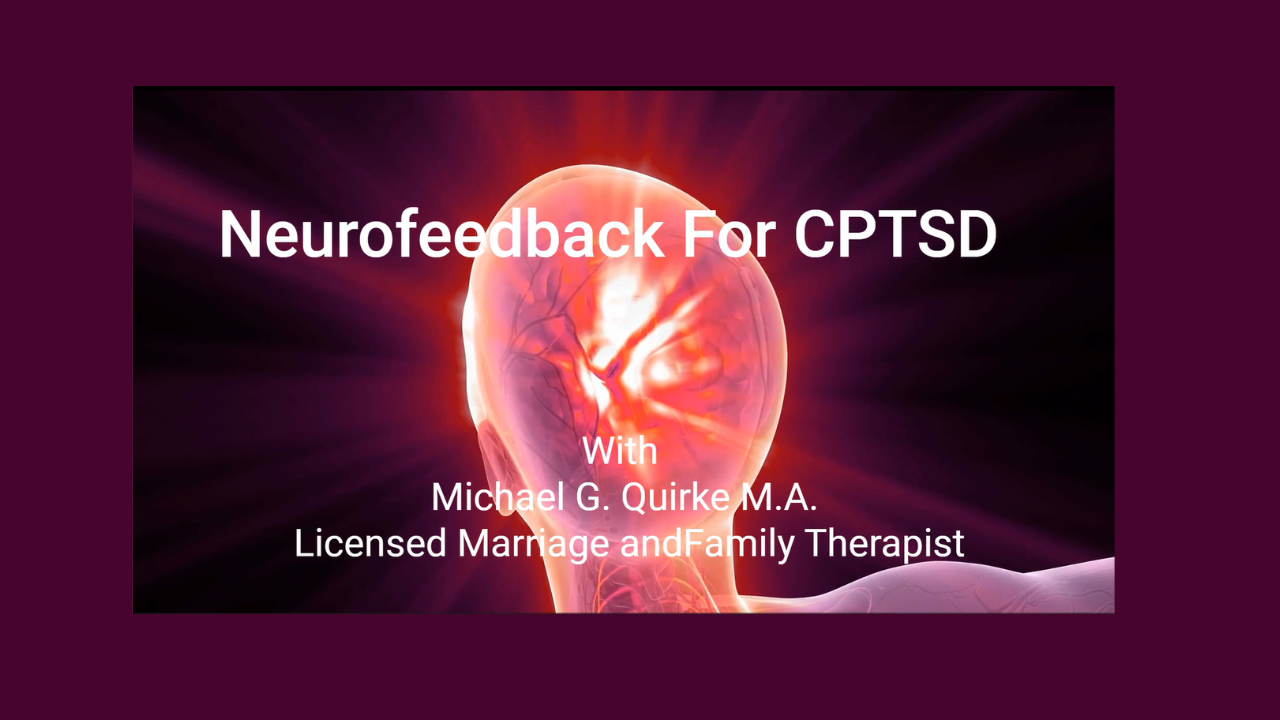What Are the Potential Benefits of Neurofeedback?
In today’s fast-paced world, stress, anxiety, various mood and neurological disorders have become increasingly common. As our understanding of the brain and its functions advances, so does our ability to harness innovative techniques to address these issues. Neurofeedback, a non-invasive therapeutic approach, has gained popularity in recent years for its potential to improve mental well-being and cognitive performance. In this blog post, we will explore the world of neurofeedback and its potential benefits. I’ll shed light on how this technique may help you to lead a healthier, more balanced life.
Understanding Neurofeedback
Neurofeedback, also known as EEG biofeedback or neurotherapy, is a therapeutic approach that aims to regulate and optimize brain activity. It operates on the principle that the brain’s electrical activity, as measured by an electroencephalogram (EEG), can be modified to improve various aspects of mental health and cognitive functioning. During a neurofeedback session, electrodes are attached to the scalp to monitor brainwave patterns in real-time. These patterns are then displayed on a screen, allowing both the therapist and the individual receiving the therapy to visualize and understand their brain’s activity.
regulate and optimize brain activity. It operates on the principle that the brain’s electrical activity, as measured by an electroencephalogram (EEG), can be modified to improve various aspects of mental health and cognitive functioning. During a neurofeedback session, electrodes are attached to the scalp to monitor brainwave patterns in real-time. These patterns are then displayed on a screen, allowing both the therapist and the individual receiving the therapy to visualize and understand their brain’s activity.
The central concept behind neurofeedback is that individuals can learn to control and regulate their brainwave patterns through continuous feedback. By providing real-time information about brain activity, neurofeedback allows individuals to recognize when their brainwaves are operating within desired parameters and when they deviate from these targets. Through repeated sessions, individuals can train their brains to produce more desirable patterns of brainwave activity, which is believed to lead to various therapeutic benefits.
Potential Benefits of Neurofeedback
Our brains control our thoughts, feelings, actions and perceptions. Because neurofeedback trains some of the most basic structures and functions in our brains, it can benefit you in a variety of ways.
Neurofeedback had been a large part of my clinical practice, and I’ve seen it help a lot of people.
Here Are Neurofeedback benefits My Clients Have Received:
Stress and Anxiety Reduction: One of the most well-known potential benefits of neurofeedback is its ability to reduce stress and anxiety. By teaching individuals to regulate their brain activity, neurofeedback can help them develop better coping mechanisms and reduce the frequency and intensity of anxious thoughts and feelings. This can lead to a significant improvement in overall mental well-being.
Improved Focus and Attention: Neurofeedback has shown promise in enhancing focus and attention span. This is particularly beneficial for individuals with attention-deficit/hyperactivity disorder (ADHD) or those looking to optimize their cognitive performance. Training the brain to maintain specific brainwave patterns associated with heightened focus can lead to increased productivity and concentration.
Better Sleep: Sleep disorders, such as insomnia, can be debilitating and affect overall health. Neurofeedback may help individuals regulate their brain activity to improve sleep quality and patterns. By training the brain to enter the appropriate sleep states more easily and maintain them, neurofeedback can contribute to better rest and overall health.
Improved Mood and Emotional Regulation: Individuals struggling with mood disorders like depression and bipolar disorder may also benefit from neurofeedback. By learning to regulate brainwave patterns associated with mood regulation and emotional stability, individuals can experience improved emotional well-being and a reduction in mood swings.
Enhanced Cognitive Performance: Neurofeedback is not only beneficial for individuals with specific mental health concerns but also for those looking to optimize their cognitive performance. Athletes, students, and professionals seeking to sharpen their mental acuity can use neurofeedback to fine-tune their brain’s performance for better decision-making and problem-solving abilities.
Pain Management: Chronic pain is a complex condition that often involves the brain’s perception and processing of pain signals. Neurofeedback can help individuals modulate their perception of pain by regulating brainwave patterns associated with pain processing. This can complement other pain management strategies and improve overall quality of life for individuals with chronic pain.
Epilepsy Management: Some individuals with epilepsy may find neurofeedback helpful in reducing the frequency and severity of seizures. By training the brain to maintain more stable patterns of activity, neurofeedback can have a positive impact on seizure control.
Peak Performance in Sports and the Arts: Athletes, musicians, and artists often use neurofeedback to reach peak performance states. By optimizing brainwave patterns associated with their specific discipline, individuals can enhance their skills and achieve greater success in their chosen fields.
The Science Behind Neurofeedback
The effectiveness of neurofeedback is grounded in the neuroplasticity of the brain. Neuroplasticity refers to the brain’s ability to reorganize and adapt by forming new neural connections throughout life. Neurofeedback leverages this capacity by encouraging the brain to establish and strengthen specific neural pathways associated with improved mental health and cognitive functioning.
Research on neurofeedback is ongoing, but several studies have shown promising results. For example, a meta-analysis published in the journal “Psychological Bulletin” in 2017 concluded that neurofeedback is a potentially effective treatment for ADHD, with medium to large effect sizes observed. Other studies have provided evidence of neurofeedback’s efficacy in managing anxiety, depression, and post-traumatic stress disorder (PTSD).
The Neurofeedback Process
The neurofeedback process typically involves the following steps:
- Assessment: The first step is a comprehensive assessment to understand your specific concerns and goals. An initial EEG recording will be taken to establish baseline brainwave patterns.
- Training Sessions: Based on your assessment, a personalized neurofeedback protocol is created. During training sessions, electrodes are placed on your scalp, and your EEG brainwave patterns are displayed on a screen in real-time. I’ll provide some coaching and guidance to help you modulate your brain activity towards the desired patterns.
- Feedback and Progress Tracking: Throughout your training sessions, you’ll receive feedback about your brainwave patterns. Over time, you will learn to recognize and control your brain activity better. Progress is tracked through regular assessments and adjustments to the training protocol.
- Maintenance: Once desired improvements are achieved, some individuals may continue with periodic maintenance sessions to ensure long-term benefits.
Is Neurofeedback Right for You?
While neurofeedback shows promise in addressing a wide range of mental health and cognitive issues, it’s essential to approach it as a part of an integrative therapeutic journey.
So, what can you expect from neurofeedback therapy?
For the majority of clients I’ve seen, neurofeedback is not a standalone solution. Here is an analogy to help you see what I mean. Some people take psychiatric drugs. They hope, and often expect that it will solve all their problems. But deep down inside, we all know that rarely, if ever, happens. Though we might wish it to be so, a pill probably won’t magically fix our lives. We’ll still have to deal with ourselves, other people and the world.
You’ll Get The Best Neurofeedback Benefits By;
- Prioritizing your health
- Stopping behaviors that damage your brain’s health
- Addressing situations and circumstances that are harm you
- Developing better communication skills
- Resolving old emotional patterns
- Improving your relationships
- Questioning the accuracy and the usefulness of your thoughts and assumptions
- Sleeping deeply and enough
- Eating a healthy diet
- Getting regular exercise
- Utilizing mind/body/spirit practices (meditation, yoga, martial arts, prayer, etc)
As with any intervention, results can vary from person to person. Before considering neurofeedback, consult with a qualified healthcare professional who can assess your specific needs and determine if this therapy is appropriate for you.
Additionally, if you are interested in neurofeedback, you should be prepared for a commitment of time and resources. Neurofeedback typically involves multiple sessions over several weeks or months to achieve noticeable results.
Here’s To Your Brighter, More Balanced Future.
Neurofeedback offers an exciting avenue for improving mental well-being and cognitive performance by harnessing your brain’s incredible ability to adapt and reorganize itself. The potential benefits of neurofeedback, including stress reduction, improved focus, better sleep, and mood regulation, make it a valuable therapeutic option for many. As research in this field continues to advance, we can expect even more refined and effective approaches to enhance the quality of life for those seeking to optimize their mental health and cognitive function.
If you are considering neurofeedback as a potential solution to your mental health or cognitive concerns, consult with a qualified healthcare professional who can guide you through the process and help you determine if neurofeedback is the right choice for you.
To learn more about neurofeedback, visit my neurofeedback services page.
Or,
Book an appointment, if you would like to see if neurofeedback has the potential to unlock your path towards improved mental well-being and cognitive performance.


